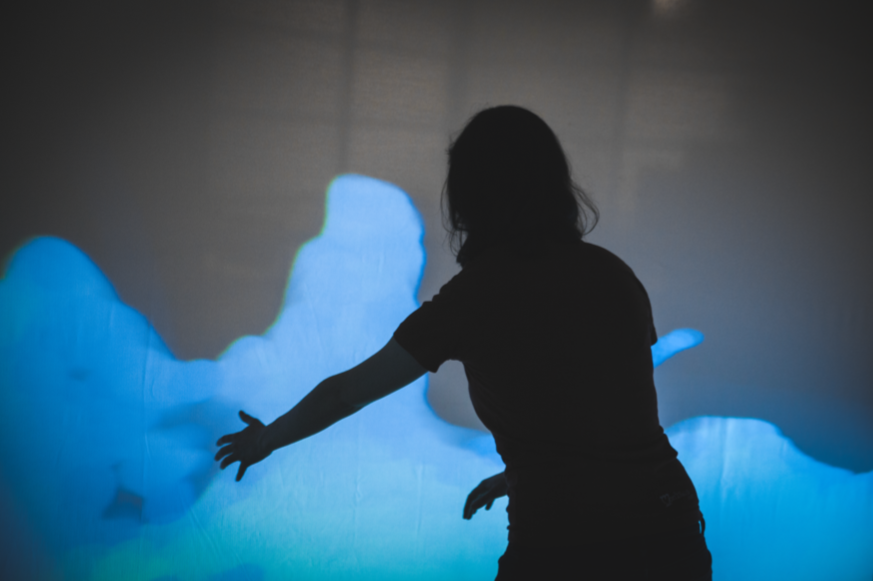New computation arts course connects students with Montreal multimedia company VYV
 Ebb & Flow, a immersive and participatory installation by Computation Arts students Rebecca Dadouche and Sebastian Alvarez.
Ebb & Flow, a immersive and participatory installation by Computation Arts students Rebecca Dadouche and Sebastian Alvarez.
CART 461 Tangible Media Studio is a new course taught by Assistant Professor Alice Jarry in the Department of Design and Computation Arts in partnership with Montreal computation arts company VYV.
Students in the Winter 2021 course will learn how to design multimedia installations, benefitting from access to both VYV's expertise and their advanced imaging and digital arts design technologies.
Class projects will be designed with specific Montreal locations in mind and students will be able to work with VYV’s partner institutions, including such major cultural institutions as the Quartier des Spectacles, the Société des Arts Technologiques, and the Grande Bibliothèque de Montréal.
“For us, being able to expose students to such high-level technology is a way to democratize what we do, and is one of our prime objectives, along with making sure that students have fun working with us and learning new technologies,” says Ana Gavrancic, the organizational development & training expert at VYV.
Creating communities and developing tools and skill sets
Tangible Media Studio explores key themes and issues related to the production of public interactive and responsive media projects, including immersive environments, participatory installations, data visualization, and wearables. Students will focus on creating and critically engaging with prototypes, and concentrate on researching, developing, producing, and presenting a major project proposal.
Jarry specializes in environmental design, digital arts and tangible media. She saw VYV’s potential as a partner for CART 461, when they approached the department earlier in the year seeking out collaborative opportunities.
“I offered to collaborate with them on my course, seeing it would be beneficial for both the students and the company.”
VYV has been creating special effects and digital media installations for over 15 years. They create installations for large-scale events, from sporting events to music concerts, and have collaborated with many well-known artists, including Justin Timberlake, Cirque du Soleil, Alicia Keys, Roger Waters, and Robert Lepage.
“Developing links with the universty community is also part of our innovation process; it’s a way for us to create communities and develop our tools and skill sets,” says Gavrancic.
Engaging with public spaces during a pandemic
Developing the course during the pandemic came with its own challenges. Most of the students’ projects will have to adapt to social distancing measures, so Jarry has reimagined the theme of the course to “Making Sense / Building communities: Engaging public spaces in a context of Pandemic.”
“The communities that used to be part of the public space aren’t, for the most part, present anymore. We have to design our works with that in mind and think of the locations we’re working with as new exploration grounds,” says Jarry.
She has also adapted essential aspects of her teaching to the online environment. It’s important to learn how to divide our time differently in the classroom, explains Jarry. She has diversified her teaching methods so that students don’t feel overwhelmed or isolated, and organizes a mix of group workshops, synchronous and asynchronous activities in her courses.
CART 461 is available to any student who has completed the CART 360 class, or who has permission from the Design and Computation Arts Department.
To learn more about the Department of Design and Computation Arts and the Computations Arts program.
